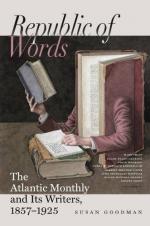To stimulate this feeling, it is requisite that our public should have free access to galleries in which shall be exhibited in chronological series specimens of the art of all nations and schools, arranged according to their motives and the special influences that attended their development. After this manner a mental and artistic history of the world may be spread out like a chart before the student, while the artist with equal facility can trace up to their origin the varied methods, styles, and excellences of each prominent epoch. A gallery of art is a perpetual feast of the most intense and refined enjoyment to every one capable of entering into its phases of thought and execution, analyzing its external and internal being, and tracing the mysterious transformations of spirit into form. It has been well said, that a complete gallery, on a broad foundation, in which all tastes, styles, and methods harmoniously mingle, is a court of final appeal of one phase of civilization against another, from an examination of which we can sum up their respective qualities and merits, drawing therefrom for our own edification as from a perpetual wellspring of inspiration and knowledge. But if we sit in judgment upon the great departed, they likewise sit in judgment upon us. And it is precisely where such means of testing artistic growth best exist that modern art is at once most humble and most aspiring: conscious of its own power and in many respects superior technical advantages, both it and the public are still content to go to the past for instruction, and each to seek to rise above the transitory bias of fashion or local passions to a standard of taste that will abide world-wide comparison and criticism.
An edifice for a gallery or museum of art should be fire-proof, sufficiently isolated for light and effective ornamentation, and constructed so as to admit of indefinite extension. Its chief feature should be the suitable accommodation and exhibition of its contents. But provision should be made for its becoming eventually in architectural effect consistent with its object. The skeleton of such a building need not be costly. Its chief expense would be in its ultimate adornment with marble facings, richly colored stones, sculpture or frescoes, according to a design which should enforce strict purity of taste and conformity to its motive. This gradual completion, as happened to the mediaeval monuments of Europe, could be extended through many generations, which would thus be linked with one another in a common object of artistic and patriotic pride gradually growing up among them, as a national monument, with its foundations deeply laid in a unity of feeling and those desirable associations of love and veneration which in older civilizations so delightfully harmonize the past with the present. Each epoch of artists would be instructed by the skill of its predecessor, and stimulated to connect its name permanently with so glorious a shrine. Wealth, as in the days




